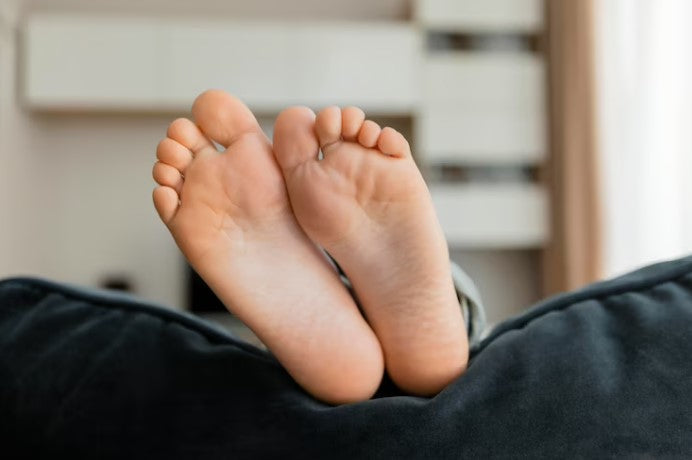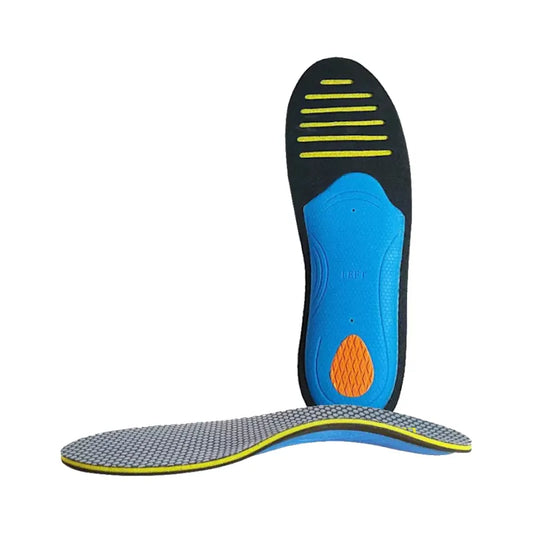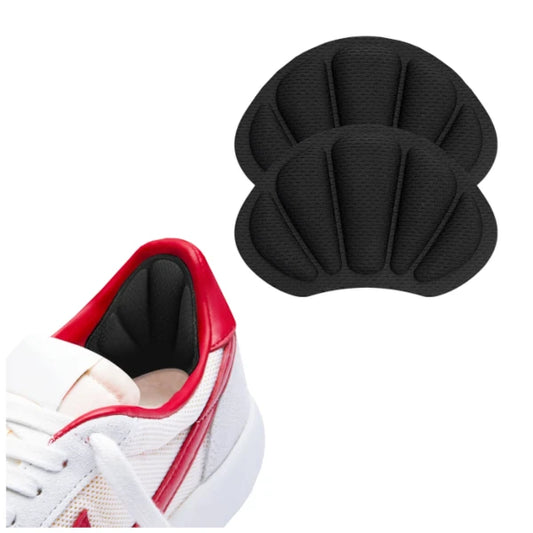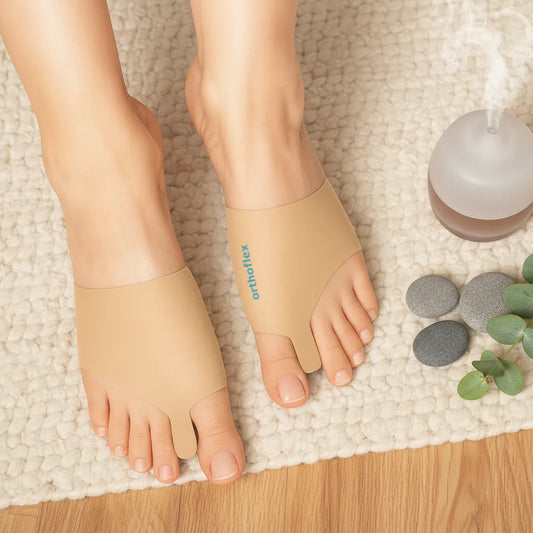
The truth behind flat feet
Share
What Are Flat Feet?
As the name refers, it’s a plain surface on the plantar region of the feet. It’s a very common condition among the world population and happens frequently in cases where the arches of the feet suffer too much pressure and suddenly flatten.

When we are born, our arches aren’t fully developed, they are only fully developed by the age of 6. So everyone is born with flat feet but throughout our childhood, arches start appearing. If this doesn’t happen during childhood, then the flat feet diagnostic also comes up. Some people develop this condition later on, after an injury or just by aging.
Some people have flat feet and do not have any pain or functional problem in their daily lives, but they are a small number. In general, people who suffer from flat feet sooner or later will trigger secondary problems with this condition. For example, in the US Army, if you have flat feet during admission medical exams to join, you’re automatically discharged as you’re not suitable for marching due to the risk of spinal damage.
Typical Symptoms
As mentioned above, most people have no symptoms associated with flat feet. However, some people with this condition can experience pain, more intense in the hell or arch area. The pain is referred to as acute and like stitches and may worsen with walking, standing for a long time, or exercising. Normally it’s worse throughout the day. Swelling is also a visual symptom that you should pay attention to, as it can appear in the plantar region or on the medial side of the feet. Leg cramps and muscle pain close to the ankle articulation are also symptoms to consider.
What Causes Flat Feet?
Again, everyone is born with flat feet and sometimes it’s also a genetic condition from your family. There’s no obvious cause for having flat feet but there are some theories:
- Feet bones not growing properly during pregnancy;
- Babies born with pathologies that affect the neuromuscular system like cerebral palsy or spina bifida;
- Tissue damage in your feet after an injury or aging process;
- Undevelopment of the arches of the foot during childhood.
Key Risk Factors for Flat Feet
Several factors can play an important role in developing this condition, such as:
- Ankle or foot injuries, due to biomechanical alterations;
- Diabetes, metabolic diseases can impair your neurological function and perception of pain;
- Obesity or pregnancy, with the weight increase the arches, tend to fall;
- Arthritis, due to the general articular inflammation it may damage your foot tissues;
- Aging, a natural state of the human condition when the structures don’t regenerate as before and tolerate high load for years and years.
Keeping a healthy and active lifestyle it’s essential to avoid developing flat feet or other complications.
When to see a doctor
We recommend you see a doctor if you have, at least one of these alert signs:
- Painful or stiff feet;
- Previous history of feet or ankle injuries;
- Difficulty walking or keeping balance;
- Sudden fallen arches;
- Unilateral appearance.

If you have any of these or all of them, you should definitely see a doctor to do a proper evaluation and complementary exams if needed. It’s very easy to diagnose flat feet and your doctor will probably do it at the moment. He/She can also advise about what type of shoes you should use, recommend specific shoe insoles, and also do physiotherapy if that’s the case.
Treatment
Well, if you suffer from any of the alert signs and you already have a confirmed diagnosis of flat feet, it’s time to look for treatment. First level aka nonsurgical treatments include medication like anti-inflammatories or pain-killers or both, in order to ease the inflammation process and pain; should also include physiotherapy to help decrease pain, maintain functionality and mobility of the structures and normalize gait and foot biomechanics; and last but not least, recommendation of supportive devices like insoles or foot braces, that can help you alleviate the pain during the day.

Surgery is rarely needed for this problem and it’s considered the last resource option. Only if there’s a structural problem with your bones, tissues, or muscles and all the other treatments were tried without success, the doctor might suggest this. But again, it’s very uncommon, and a really small percentage of people present criteria for surgery.
Conclusion
In conclusion, flat feet are a common condition where the arches of the feet flatten, and it can be caused by several factors such as genetics, previous injuries, and undeveloped arches during childhood. While many people with flat feet don't experience any symptoms, some may suffer from acute pain, swelling, leg cramps, and muscle pain. There are also key risk factors for flat feet, such as diabetes, obesity, and arthritis.
If you're experiencing any of the alert signs, it's important to seek medical attention for a proper evaluation and diagnosis. Your doctor may recommend nonsurgical treatments like medication, physiotherapy, and supportive devices such as insoles or foot braces to alleviate pain and improve functionality.
Keeping a healthy and active lifestyle can also help prevent the development of flat feet and other complications. It's essential to take care of our feet, as they support us throughout our daily lives and any pain or discomfort can greatly affect our quality of life. By being aware of the risk factors and symptoms associated with flat feet, we can take proactive steps to prevent and manage this condition.
Author Bio:

Marlene Carvalho
Certified Sports Physiotherapist of Elite and Olympic athletes; Performance Coach to Racing Drivers
Marlene Carvalho is a sports physiotherapist passionate about all things sports.
References
Adult acquired flatfoot. American Academy of Orthopaedic Surgeons. https://orthoinfo.aaos.org/en/diseases--conditions/adult-acquired-flatfoot.
Chorley J. Forefoot and midfoot pain in the active child or skeletally immature adolescent: Overview of causes. https://www.uptodate.com/contents/search.
Greisberg JK, et al., eds. Flatfoot. In: Core Knowledge in Orthopaedics: Foot and Ankle. 2nd ed. Elsevier; 2019. https://www.clinicalkey.com.






